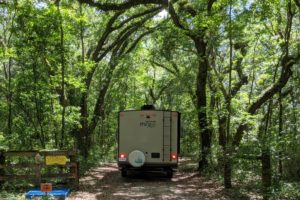Around Ely, as we’ve said, is the copper mine, the smelter in McGill, and the Nevada Northern railroad. The railroad had tracks straight into the open pit mine, and the train carried the tons of ore to the smelter just 10 miles north of Ely.

Like my new jacket? Just bought it in town at a new antique/collectibles store. It matches everything and doesn’t wrinkle; perfect for traveling.
The McGill train station at the smelting plant.

So what’s a smelter, I asked, and why did the copper company want one in the area? A smelter is a factory that burns the ore from the mine at a high heat to extract a base metal, in this case, copper. Shipping just the copper and not all of the ore to the railroad up north would save the companies more money than not operating the smelters.
I bet you’re wondering what happened to the ore that didn’t have copper in it. You’ll find the answer in the next post.
In 1906, construction began on the smelter in McGill after bringing water from nearby Duck Creek to reservoirs near the smelter site. The $10 million smelter was completed and operations began in May 1908, and the first copper was shipped 3 months later in August.
The town started out as a ranching community that even had a post office open in 1891. Early workers at the smelter probably lived in Ely and took the train to work. But company management decided it would be better for the employees to live close by.
The town began growing in 1910 to 1900 residents when the smelter was built. By 1920, the population had grown to 2864. This was a company town rather than a mining town so was a far cry from the wild west we’ve heard about. No red-light districts were allowed and few saloons were available. It was young and forward moving with one dusty main business street with raised wooden sidewalks. The McGill Clubhouse built in 1915 was a 3-story ornate building right in the middle of the circle and was well used by those in that area.
The town was sectioned off. The elite lived in what was referred to as the “Charmed Circle,” the only section with bathrooms in the houses. Other sections were designed by economic and ethnic groups: Greek Town, Austrian Town, and Jap Town. Single people lived in tar-paper cabins in Lower Town. with management homes up the hill by the plant and employee homes lower down the hill. Many of these homes are still being lived in, and the homes for the elite are still desirable.
In 1932, Kennecott Utah Copper bought the mine near Ruth and the smelter in McGill, and life was good in this company town. In 1983, the price of copper, along with the low grade ore being mined, led Kennecott to close and demolish the smelter. A few buildings are still around to give us an idea of what the plant looked like.



With the primary employer gone, the population of McGill started dropping. Today’s population was 1148 at the last census, which leads us to the next post.




